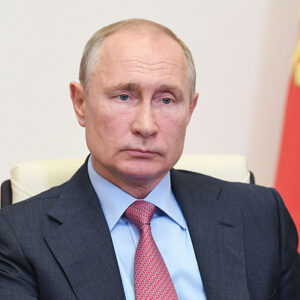After months of political dealmaking, infighting and compromises in Washington, Congress was finally able to pass a military spending bill to support Ukraine. The bill delivers support totaling $100 billion, of which $60 billion is reserved for helping the eastern European nation protect its sovereignty.
Even more notable is the approval of the Reconstructing Economic Prosperity and Opportunity Act, abbreviated as the REPO Act. This legislation authorizes the allocation of seized Russian funds to assist in the bolstering and revitalization of Ukraine. This significant development highlights innovative strategies available to Western countries to provide aid to Ukraine during this critical period, lessening the strain on public finances.
While this is a positive step, the successful implementation of seizing frozen Russian assets will require partnership with our allies in the European Union and other G7 countries in addition to them also passing greater sanctions of their own against the Kremlin’s war machine.
Despite the EU and other Western nations having implemented 16,000 sanctions against Russia since the war began, the Russian economy continues to expand, claiming 2.2 percent GDP growth in 2023 and already predicting a growth rate of 1.1 percent for 2024. While there’s skepticism regarding the accuracy of these figures, the reality remains that the Russian military continues its unabated offensive, necessitating substantial financial commitments from the United States and other countries unless substantial shifts occur soon.
However, the absence of sanctions on a significant segment of Russia’s economy continues to yield billions in profit for the Russian Federation. These funds directly contribute to the financing of drones, missiles and basic weaponry aimed at Ukrainian civilians safeguarding their residences and loved ones.
Despite the implementation of new EU sanctions after the murder of Vladimir Putin critic Alexei Navalny, Russian steel slabs and pig iron continue to flow into Europe unabated. While the 12th sanctions package includes a ban on these imports, it comes with a two-year grace period, rendering its effect negligible until possibly after the conflict concludes. Clearly, these most recent sanctions are mere rhetoric with no real effect.
Allowing unchecked imports of Russian slab for the next four years is projected to enable Russian metallurgists to sell an additional 11 million tons of steel to the EU, which would be worth more than 6 billion euros if prices remain stable. In turn, Moscow would be set to receive a profit of 1.5 billion euros. Such an amount flowing directly into Putin’s purse could finance the purchases of missiles, tanks and advanced drone technology for months.
The EU must step up to impose greater sanctions against those who are directly funding the war against Ukraine and also take action to seize frozen Russian assets to help reconstruct Ukraine after countless years of inhumane destruction.
Thankfully, it seems there’s a promising development unfolding in Europe.
Recently, the Parliamentary Assembly of the Council of Europe passed a resolution supporting the reconstruction of Ukraine and urging Council of Europe members and non-member states holding Russian assets to transfer the assets in order to support the efforts of the United States, the EU and the other G7 countries to make these frozen Russian assets available to help in the recovery and reconstruction of Ukraine.
This global collaboration and alignment are vital for ensuring Ukraine receives the urgently required financial support and for effectively using the substantial frozen assets of the Russian state — amounting to hundreds of billions of dollars — to reconstruct the wreckage inflicted by Russia. It circumvents the necessity for lawmakers worldwide to turn to their respective citizens for financial assistance, all while Russia continues to operate without facing sanctions or having its war-generated profits confiscated.
As the conflict in Ukraine persists, it’s imperative for the United States to collaborate with EU allies to escalate sanctions against the Kremlin’s military endeavors and coordinate international consensus on using frozen Russian assets, amounting to billions of dollars, for the reconstruction efforts in Ukraine.


